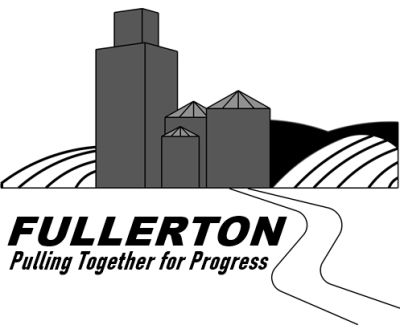History of Fullerton
History
From the late 1700s to the mid-1800s, the Fullerton area found itself the object of those hoping to profit from its resources or pass through its rich prairies. French traders, migrating Mormons, and hopeful settlers came and went as fortune favored or abandoned them. A treaty in 1856 made Nance County and some nearby counties into a Pawnee reservation. An Indian school was built in a nearby town, and villages were established near the present site of Fullerton.
The increased military presence and government attention brought focus to the area's potential. After the Civil War, displaced citizens, immigrants and entrepreneurs advanced in waves across the plains along with the transcontinental railroad, hoping to get rich or at least gain a new start. Nance County could not be settled by the provisions of the Homestead Act because it was an Indian reservation; however, sod houses popped up all around in neighboring territory.
In July 1876, Randall Fuller, enroute with a large herd of cattle from Faribault, Minnesota, to Colorado was so impressed with the lush prairies, two rivers to reduce risk of prairie fire, and many other features of the country that he decided to locate and establish his future headquarters here. Others made the same discovery, and the economic boom took on a life of its own.
Demonstrating his foresight, Fuller purchased large tracts of land when the Indian reservation was taken away from the native Americans. In 1871 after the Pawnee had been transferred to Oklahoma, the land was auctioned "to benefit the Indians." A minimum bid of $2.50 per acre was set. Fuller bought choice segments of land between the Loup and Cedar Rivers and immediately set out to have the town surveyed. By 1879, a system of streets marked only by stakes existed, and Fullerton was named the temporary county seat, pending organization of a county government. Fuller donated 60 acres of land to the county to build a courthouse.
Fuller faced stiff competition from another entrepreneur, D.A. Willard of Genoa, who wanted his land to be the county seat. Considerable economic incentives and land values were at stake. Fuller craftily proposed the new county be named Nance, after the then governor of the state, and that Fullerton be the county seat. A similar proposal from Willard was to name the county Willard, with Genoa as the county seat. It is not known if Governor Nance was swayed by the flattering application, but the results of a disputed election along with the governor's intervention allowed Fullerton to earn the honor.
The area's hunting and fishing opportunities have been a part of the local heritage. A museum in an early church provides a more detailed look at other elements of the proud history, people, and potential of Fullerton.
Interesting Facts
One of the most picturesque spots in the area is located in the northwest corner of Fullerton and has been referred to as "Buffalo Leap" (Indians drove buffalo off the cliff as a hunting technique) and more commonly as "Lovers Leap" or simply "The Leap." Randall Fuller purchased the 40 plus acres of oak timber and made it available to others. It served as the location of the Chautauqua for nearly thirty years from 1898 to 1930. In the heyday of the Chautauqua, special trains were dispatched from Columbus to bring people to the two-week event that featured political candidates, musicians, evangelists, lecturers, nationally known entertainers, and even the full three-ring Barnum and Bailey Circus. The town's population literally doubled during that time, and a tent city was erected to house the guests.
The area also served as a site for summer homes, as a "tourist camp," and has been the site of the Nebraska Baptist Camp since 1941. Now known as "Broken Arrow Wilderness," it still offers recreational opportunities and social facilities for the public. Broken Arrow Wilderness was the home of the first official state 4th of July celebration held in 1844.

